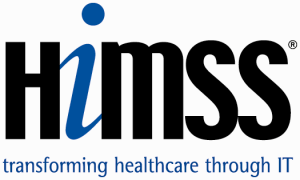Below is a blog entry by CEO Raj Lakhanpal, MD, FACEP that originally appeared HIMSS.org
Approaching MIPS Cost Performance: Recommendations and Cautionary Advice
By: Raj Lakhanpal, MD, FACEP, member, HIMSS Clinical & Business Intelligence Committee; member, governance board, MITA (Medicaid Information Technology Architecture); CEO, SpectraMedix, @LakhanpalMd, @SpectraMedix
What you need to know about the change in the cost performance category weight in the MIPS score
When the Centers for Medicare and Medicaid Services (CMS) announced the Quality Payment Program final rule for CY2018 in early November, it came with a surprise in the form of a change in the weighted score for the cost performance category in the Merit-Based Incentive Payment System (MIPS). Initially, CMS proposed that cost would be weighted at 0%, as it had been in the 2017 transition year, with three other categories (quality, improvement activities {IA}), and advancing care information {ACI}) equaling 100%. In the 2017 transition year, cost did not factor into the overall performance review for eligible clinicians (ECs), and it wasn’t expected to be included in 2018. But with the cost performance category assigned a weight of 30 percent of the MIPS final score by reporting year 2019 (payment year 2021) and beyond, CMS chose to implement the 10% weight in reporting year 2018 to avoid a significant jump over a short period of time.
How do you report your data for the cost performance category?
ECs do not need to report any data for cost; it is calculated by CMS. Cost calculation takes into account the entire performance year as does quality, while ACI and IA are based on reporting 90 consecutive days. Cost is based on two measures: (1) Medicare spending per beneficiary, and (2) total per capita cost.
Three ways to improve your cost performance category score and increase bonus opportunities
Currently, ECs may believe they have little control over their cost performance category score as calculated by CMS. But there are things that can be done now to improve cost scores down the road. 1. Understand your quality and resource use report (QRUR) o The Quality and Resource Use Report (QRUR) – produced by CMS for group practices and solo practitioners that have billed Medicare Part B fee-for-service during the reporting year – will give you a sense of where you stand as you head into 2018. Use the QRUR as guidance in selecting your “best” quality measures to improve your overall score in 2018. 2. Use data to drive improvements o The cost performance category report compares an EC’s score to national benchmarks. Use this comparison to see where improvement activities can be implemented or enhanced now to affect cost outcomes and overall MIPS score. 3. Reliable sources o Data aggregation and analytics are key to reliable outcomes. Achieving higher overall scores can push cost ranking up in future years. Access to reliable data will help with earning a positive payment adjustment and, hopefully, the exceptional bonus threshold.
Some cautionary advice
Lastly, consider MIPS’s effect on your professional reputation. CMS will begin to report scores on their Physician Compare website. Earning a neutral or negative score compared to peers can result in patients choosing another care provider. It may also influence choices made by hospitals when hiring and in referrals. As MIPS progresses toward the end game – value-based payment by ALL providers – a plummeting reputation can cost you. This may be the most important lesson to learn from this program: just ‘getting through’ MIPS should not beyour end game.
The future is now
ECs must be ready to accept the challenge from day one. The transition year was meant to help prep ECs for a future with value-based care. The future is now. Have you started to consider which quality measures will help you maximize quality and cost performance scoring? Achieving financial and reputational success is possible! Read live on HiMSS.org

